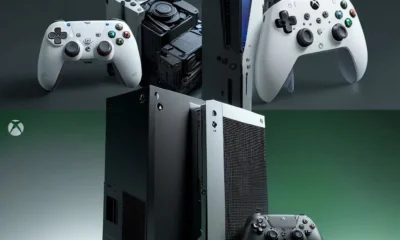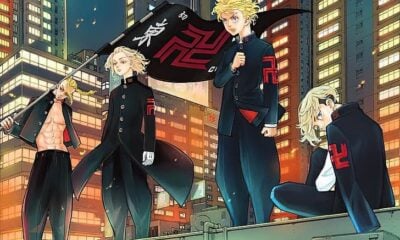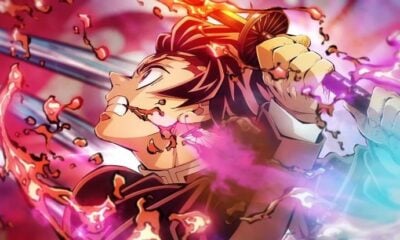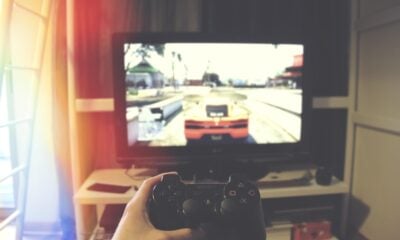Features
E3 Hands-On: ‘Star Wars Battlefront II’ Taking Us Back to the Front, Back to Basics
Despite being the sequel to Dice’s gorgeous but deeply divisive Star Wars Battlefront, Star Wars Battlefront II feels more akin to…well, Star Wars: Battlefront and Star Wars: Battlefront II from the original Xbox and PS2 era. Don’t get me wrong, Dice’s Battlefront was an impressive, incredibly immersive experience, but one that needed a little refinement. Battlefront II promises to provide that needed refinement, but in more than one way borrows from the original Battlefront series. So much so that, while impressing upon the player that this is a direct sequel and improvement to the 2015 AAA title, the game simultaneously feels almost like the Star Wars: Battlefront III we never got or a truer relaunch of the original Battlefront series.
On the surface, Star Wars Battlefront II is offering the same immersive experience, placing players in iconic Star Wars battles and allowing them to fight on the front line, fulfilling that same fanboy fantasy, while offering more. Unlike the 2015 title, which focused squarely on the original trilogy, Battlefront II spans all three trilogies, providing more Star Wars for players to participate in. With that comes a more diverse set of heroes from all eras who, if the E3 demo I played is anything to go by, won’t be limited to their respective eras while soldiers will change in appearance only depending on the settings time period. In the demo I played, set in the prequel trilogy, it was Battle Droids against Clones with the Droids assisted by the likes of Darth Maul and Boba Fett and the Clones supported by Rey and Han Solo.
By opening the door to new episodes but not restricting heroes, players will get to experience a richer variety of settings and atmospheres while ultimately still being allowed to play however they’d like, and without jeopardizing balance with alternate character types. That’s on top of new modes, including a more full-fledged starfighter mode developed by Criterion (Burnout), in-game quests and challenges, as well as in-game events hosted by EA, as well as seasons. Dice is also making every effort to not separate the player base, so all new content will be offered for free and there won’t be a season pass.
Instead of a specific game mode being demoed, EA brought Assault on Theed, which will presumably be included as part of a specific game mode upon actual release under some typical, dramatic sounding, shooter type banner like “Assault,” or “Infiltration,” or “Shooty Shooty Bang Bang McBlow ‘Em Up.” Okay, maybe not that last one, but you get what I mean. It was a balanced, multi-part mode, exactly what one might expect from Dice by this point, in which the Battle Droids were initially tasked with defending a carrier as they stormed Naboo’s capital, Theed, and the Clone troops were responsible for taking the carrier out. Then the roles were reversed as the Clones defended Theed’s palace while the Droids used everything in their arsenal to try and clear and claim it. The design and atmosphere perfectly captured the setting of the movies.
Despite my bemoaning the addition of anything to do with the prequels before playing Battlefront II, Battle Droids in particular, completely separate from the prequel trilogy’s script, terrible acting, and mind numbing plot, I actually really enjoyed the setting and use of the time period. It transported me back to an era of gaming when everything incorporated the prequels because that was what was new. The Star Wars universe was suddenly expanded and everyone wanted to explore it and experience it. Now, nearly twenty years later, we are in much the same position and I can only hope that Dice can capture The Force Awakens and The Last Jedi half as well as they have encapsulated the engaging world design (admittedly one of its redeeming qualities) of the prequel trilogy.
Not unlike the original game series, Battlefront II features a class system. At the start of a match, four class types are available for players to choose from: Assault, Heavy, Officer, and Specialist. Each feature a varying arsenal, perks assigned to the left and right bumpers, and different benefits. The Assault class seems tailored for dexterity and mid-ranged combat and featured grenade abilities. The Heavy class, my favorite in my time with the game, was slower with a powerful heavy machine gun and an ability that sacrificed mobility in favor of a strong, personal shield that absorbed incoming fire from the front. The Officer unit had close range weapons and an auto-tracking turret not unlike those from the last game, while the Specialist had a sniper and mines ideal for setting traps and covering blind spots.
Each class also has a super or ultimate ability which is slower to recharge than standard abilities and activated by pressing both bumpers simultaneously. The Assault class, for instance, gains a shotgun for a limited time, making them more dangerous at closer range than usual while the Heavy has a chain gun which won’t allow players to shield while activated, grows faster and more lethal with time, and works at greater distance. Beyond being a callback to the original Battlefront series, the new class system greatly benefits the game by adding variety to the game, adding important limitations (not giving every player a sniper, for instance), and ultimately bring a stronger sense of balance to the force…I mean game.
Unlike the original series, each class has a set of interchangeable abilities. Similar to the last Battlefront, this game allows players to customize troopers with different Star Cards, or rechargeable abilities. Instead of the previous purchase and upgrade system, Star Cards, earned through play, come in four different rarities: Common (white), Uncommon (green), Rare (blue), and Epic (purple). Completing quests and challenges, participating events, and new Crates (speculatively things that can be earned but will also be purchasable through microtransactions) can all grant Star Cards of varying rarity. Heroes and starfighters can also be customized in this way, allowing players to play to their strengths and how they see fit. From what I gather based on my short time with the game, Star Card’s recharge rate improves with rarity while also extending duration, though I’m not entirely sure.
Also in the vein of 2005’s Battlefront II, different troops, heroes, and, in the case of the new Battlefront II, vehicles can be earned in each match. Gone are the days of random upgrades, heroes, and abilities being scattered across the map to whichever lucky player happened upon them. Now, by contributing to the match in a multitude of different ways, players earn Battle Points in match. Then, at the respawn screen, where players can change trooper type and swap abilities, players can spend their Battle Points on rewards including enhanced units, starfighters, land vehicles, and, of course, heroes. The better the reward, the more Battle Points it’ll cost, making for a unique meta game of when to save and when to spend.
A hero, the most expensive reward, costs 5,000 BPs, while a Super Battle Droid only costs 2,000, giving players an intriguing choice between spending points on something that may benefit the team more immediately and help the player rack up points more quickly or saving for something more effective down the road. The system seems intelligently balanced. Heroes, for example, don’t earn Battle Points while on the field, meaning a player can’t play Maul until they can buy Maul again when they inevitably fall. At no point during the match did either team completely run away with the match due to their collective success and constant BP rewards. Instead, heroes and enhanced troops seem much more balanced and manageable, still capable of making a positive impact, but a much smaller cameo when compared to the heroes of the last game. Ultimately, the system seems very rewarding, allowing both those who are doing well and those who are struggling to turn the tides with rewards.
2015’s Battlefront, with its amazing visuals, engaging, quick paced gameplay, and outstanding attention to the small details made for an enjoyable game, but one that always had untapped potential glistening beyond the surface, more like Death Star blueprints than the Death Star itself. With Star Wars Battlefront II finessing its multiplayer and returning it to something more akin to the original series, on top of a highly desired campaign, Battlefront II stands not only to be the Battlefront we always wanted, but maybe even the most immersive Star Wars video game ever made. Here’s to hoping this is when Battlefront strikes back!

-

 Features4 weeks ago
Features4 weeks agoThis Upcoming Romance Anime Might Just Break the Internet; Trailer Just Dropped!
-

 Features3 weeks ago
Features3 weeks agoDon’t Watch These 5 Fantasy Anime… Unless You Want to Be Obsessed
-

 Features3 weeks ago
Features3 weeks ago“Even if it’s used a little, it’s fine”: Demon Slayer Star Shrugs Off AI Threat
-

 Culture2 weeks ago
Culture2 weeks agoMultiplayer Online Gaming Communities Connect Players Across International Borders
-

 Game Reviews3 weeks ago
Game Reviews3 weeks agoHow Overcooked! 2 Made Ruining Friendships Fun
-

 Features6 days ago
Features6 days agoBest Cross-Platform Games for PC, PS5, Xbox, and Switch
-

 Guides4 weeks ago
Guides4 weeks agoMaking Gold in WoW: Smart, Steady, and Enjoyable
-

 Features2 weeks ago
Features2 weeks ago8 Video Games That Gradually Get Harder
-

 Features2 weeks ago
Features2 weeks agoDon’t Miss This: Tokyo Revengers’ ‘Three Titans’ Arc Is What Fans Have Waited For!
-

 Game Reviews3 weeks ago
Game Reviews3 weeks agoHow Persona 5 Royal Critiques the Cult of Success
-

 Features6 days ago
Features6 days agoThe End Is Near! Demon Slayer’s Final Arc Trailer Hints at a Battle of Legends
-

 Guides2 weeks ago
Guides2 weeks agoHow to buy games on Steam without a credit card




















